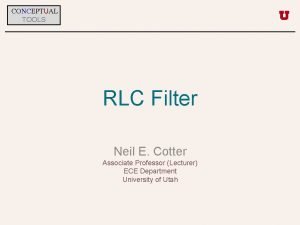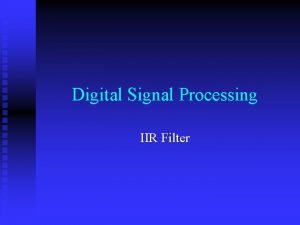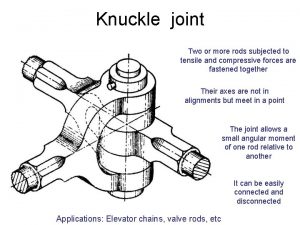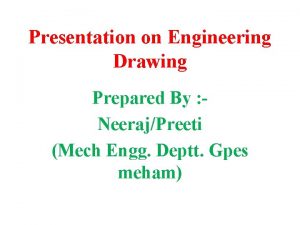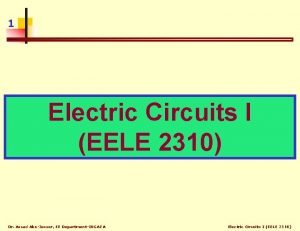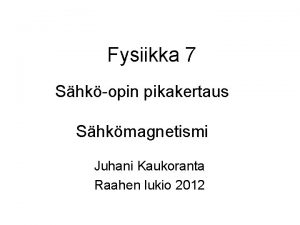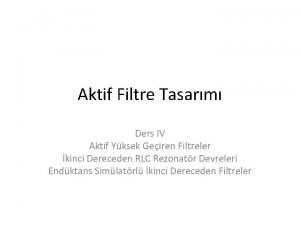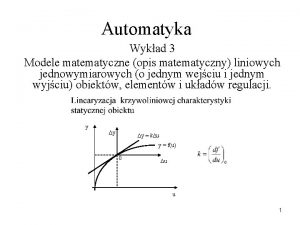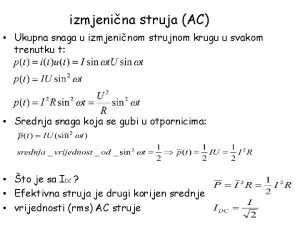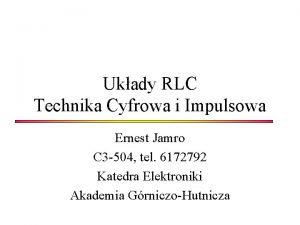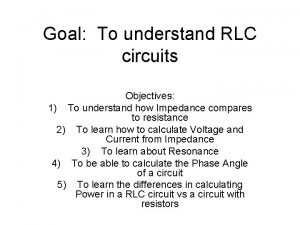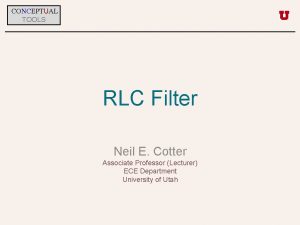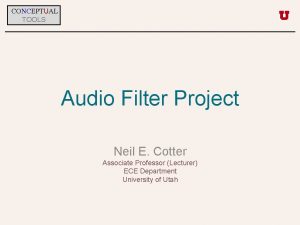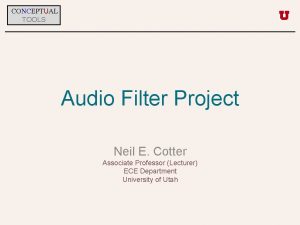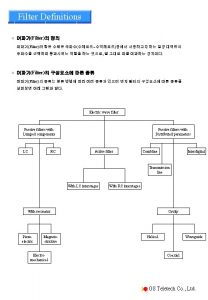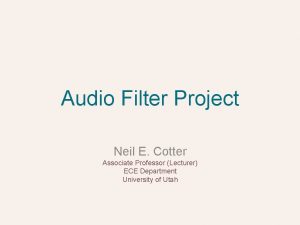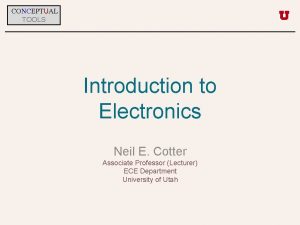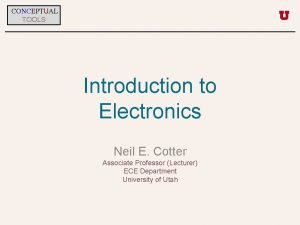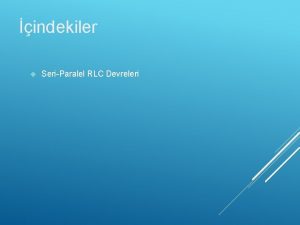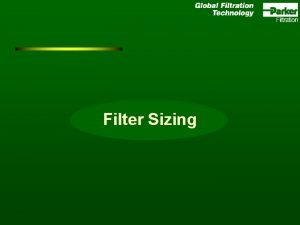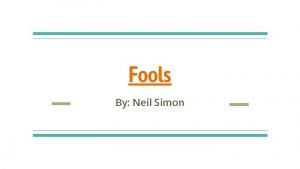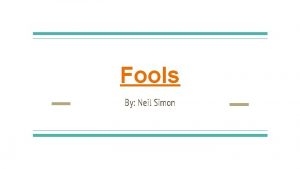CONCEPTUAL TOOLS RLC Filter Neil E Cotter Associate

















- Slides: 17

CONCEPTUAL TOOLS RLC Filter Neil E. Cotter Associate Professor (Lecturer) ECE Department University of Utah

CONCEPTUAL TOOLS Kirchhoff’s Laws • Same current, i(t), flows through L, C, and R

CONCEPTUAL TOOLS Kirchhoff’s Laws • Same current, i(t), flows through L, C, and R • Sum of voltages around loop = 0 V

CONCEPTUAL TOOLS Kirchhoff’s Laws • Same current, i(t), flows through L, C, and R • Sum of voltages around loop = 0 V

CONCEPTUAL TOOLS Phasors • All signals in circuit are sinusoids of same frequency as input • Use complex numbers to represent sinusoids Capture magnitude Capture phase shift Use j for √-1 (because i was used for current) • Use phasor transform: P[Acos(2πft +Φ)] = Ae jø

CONCEPTUAL TOOLS Phasors • Treat complex numbers as vectors Sum like vectors Product defined as (a+jb)(c+jd) = ac-bd + j(ad+bc) • Use polar or rectangular form Rectangular form: a+jb Polar form: Ae jø • Use right triangle trigonometry to covert forms: Rectangular from polar: a = AcosΦ and b = AsinΦ Polar from rectangular: A = √a 2 + b 2 and Φtan-1(b/a)

CONCEPTUAL TOOLS Phasors • Sum of sinusoids becomes sum of complex numbers • Differentiation becomes multiplication

CONCEPTUAL TOOLS Kirchhoff’s Laws • Same phasor current, I, flows through L, C, and R

CONCEPTUAL TOOLS Kirchhoff’s Laws • Same phasor current, I, flows through L, C, and R • Sum of phasor voltages around loop = 0 V

CONCEPTUAL TOOLS Kirchhoff’s Laws • Same phasor current, I, flows through L, C, and R • Sum of phasor voltages around loop = 0 V

CONCEPTUAL TOOLS Ohm’s Law • Vo = IR = voltage across R

CONCEPTUAL TOOLS Gain • Gain is size of output relative to input • Gain = |Vo|/|Vi| where |a + jb| = √a 2+b 2 = A for polar form or or

CONCEPTUAL TOOLS Gain versus Frequency • Gain is max at “center frequency” denoted by ωo • Gain is max/√ 2 at “cutoff frequencies” denoted by ωC 1 and ωC 2

CONCEPTUAL TOOLS Center Frequency • Center frequency, ωo, where gain is max • Occurs where gain = 1 • Solve for ωo using following equation:

CONCEPTUAL TOOLS Cutoff Frequencies • Cutoff frequencies, ωC 1 and ωC 2, where gain is max/√ 2 • Occurs where gain = 1/√ 2 • Solve for cutoff frequencies using following equation: • Bandwidth = β = ωC 2 – ωC 1 • Bandwidth is roughly frequency range that gets through filter

CONCEPTUAL TOOLS Filter Design • Find R and C value for assigned filter: • Low-pass filter: ωo = 2π· 280 Hz β = 2π· 1600 Hz • High-pass filter: ωo = 2π· 7000 Hz β = 2π· 1600 Hz

 Neil cotter
Neil cotter Perbedaan rapid sand filter dan slow sand filter
Perbedaan rapid sand filter dan slow sand filter Blt method will convert analog filter to dt filter that has
Blt method will convert analog filter to dt filter that has Residual chlorine
Residual chlorine Cotter joint
Cotter joint Gavin cotter
Gavin cotter Hilary cotter
Hilary cotter Gib and cotter joint drawing
Gib and cotter joint drawing Conceptual tools of financial engineering
Conceptual tools of financial engineering Lesson 8: comparing series and parallel rlc circuits
Lesson 8: comparing series and parallel rlc circuits Vaihe eron laskeminen
Vaihe eron laskeminen Ciri ciri litar selari
Ciri ciri litar selari Odev
Odev Czwórnik rlc
Czwórnik rlc Snaga izmjenične struje
Snaga izmjenične struje Układ różniczkujący rc
Układ różniczkujący rc Rlc circuit conclusion
Rlc circuit conclusion Jnc 8051
Jnc 8051
